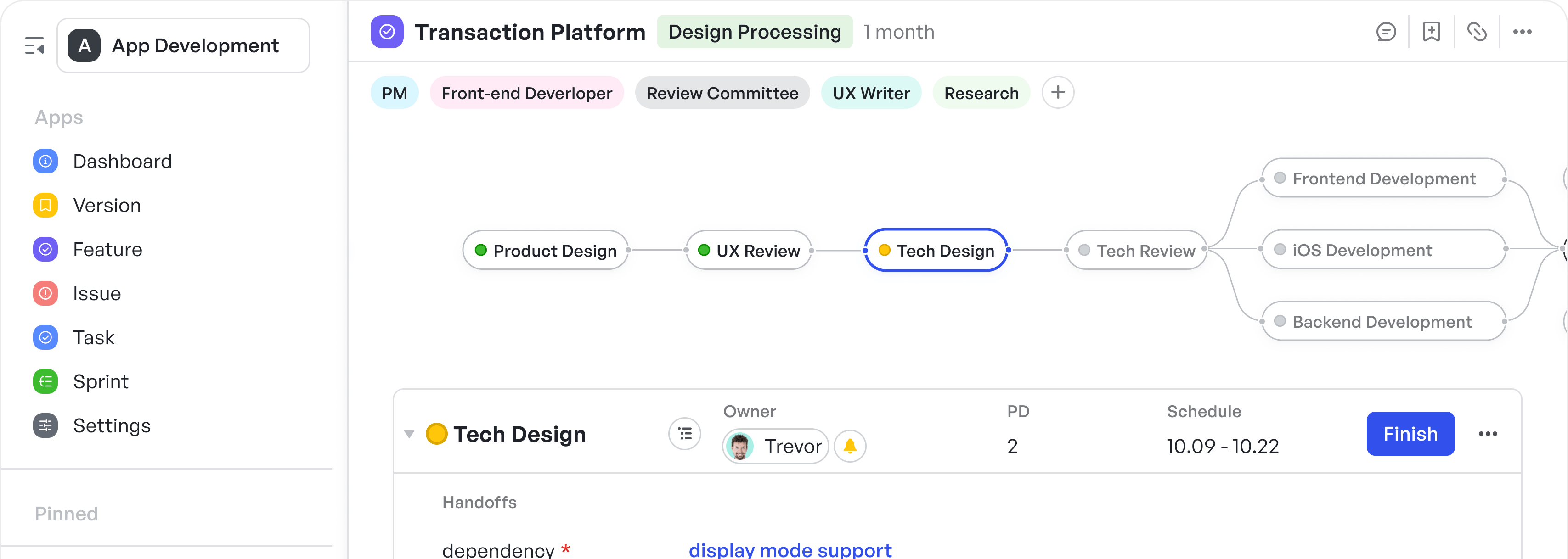What is a Project Management Methodology?
A project management methodology is a structured approach used to plan, organize, execute, and control the process of a project to achieve specific goals and meet specific success criteria at a specified time. These methodologies provide a blueprint for managing projects and involve a set of guiding principles and processes that dictate how projects are run from inception to completion.
Importance of Project Management Methodologies
Project management methodologies are vital for several reasons:
- Framework and Structure: They offer a systematic framework that helps guide the project through its phases. This structure ensures that all aspects of the project, including scope, time, cost, quality, resources, and risks, are properly managed.
- Consistency and Efficiency: By following a standardized set of procedures and techniques, organizations can achieve consistency in the way projects are managed. This uniformity helps in increasing predictability, reducing uncertainties, and improving overall efficiency.
- Communication and Collaboration: A clearly defined methodology improves communication and fosters collaboration among project team members and stakeholders by aligning everyone’s expectations and roles.
- Risk Management: Effective methodologies incorporate risk management processes that help identify, analyze, and respond to potential risks, reducing the likelihood and impact of negative events.
- Quality Control: These methodologies include built-in quality control measures that help ensure the project meets the defined quality standards and delivers the expected results.
- Adaptability and Improvement: Methodologies often include processes for reviewing and improving project performance regularly. This adaptability allows teams to make necessary adjustments to meet project objectives better.
You may also interested in
Guide to the Project Life Cycle
Project management methodologies guide the project life cycle, which typically includes the following phases:
- Initiation: Defining the project at a broad level, establishing its scope, and securing necessary approvals.
- Planning: Detailed and refined planning that establishes the basis for resource, time, and cost estimates.
- Execution: The phase where the plans are put into action to create the project’s deliverables.
- Monitoring and Control: Ongoing processes that ensure project objectives are met by monitoring project performance and implementing necessary changes.
- Closure: Formal closing of the project, including the completion of contractual obligations and the analysis of what went well or what could be improved.
Understanding and choosing the right project management methodology based on the project’s needs and the organization's environment is crucial for the success of the project. Each methodology, whether it be Agile, Waterfall, PRINCE2, or others, offers unique advantages and can be pivotal in efficiently moving through the various stages of the project life cycle.
You may also interested in
Best Project Management Methodologies: How to Choose the Right One?
Choosing the right project management methodology is crucial not only for the success of a project but also for maximizing team effectiveness and resource efficiency. Here’s how you can make an informed choice by considering several critical factors.
Define Your Project Objectives and Requirements
Clearly defining your project objectives and requirements is the first step in choosing the most appropriate project management methodology. Understand what you want to achieve at the end of the project, the deliverables you need to produce, and the quality standards you need to meet. For instance, if your project requires high flexibility and frequent revisions, methodologies like Agile or Scrum may be more suitable. On the other hand, if the project scope is fixed with clear, sequential task planning required, the Waterfall methodology could be more appropriate. This clarity makes it easier to select a methodology that aligns with the specific goals and needs of the project.
Assess Project Environment and Constraints
Complexity: Complex projects with many interdependent elements typically benefit from a structured approach like PRINCE2 or Waterfall, which focuses on rigorous phase-based planning and execution. Simpler projects might be better served by more flexible methodologies like Agile.
Change Frequency: Projects that exist in dynamic environments where changes and pivots are common require methodologies that offer flexibility and rapid pivot capabilities. Agile, Kanban, and Lean are prime examples that accommodate continual adjustments.
Stakeholder Involvement: Consider how involved the stakeholders wish to be. Agile methodologies promote continuous stakeholder engagement and feedback, which is beneficial if your project’s success depends heavily on regular stakeholder input.
Resource Constraints: Evaluate what resources are available, including budget, tools, and team expertise. Methodologies like Agile can be resource-efficient due to their iterative nature, allowing for course corrections with minimal expense.
Consider Team Dynamics
Team Size: Large teams might require methodologies with more stringent controls and formalized reporting mechanisms, such as those found in the Waterfall or PRINCE2, to prevent chaos and miscommunication. Smaller teams might benefit from the flexibility and close collaboration offered by Agile methodologies.
Expertise: The skill level of the team should also influence the decision. Methodologies like Scrum or Lean work well where the team members are highly skilled and capable of working with minimal supervision. In contrast, teams new to project management might benefit from the structured environments of Waterfall or PRINCE2.
Preferences: Finally, consider your team’s preferences and working style. Some teams may prefer the clear structure and stability of Waterfall, while others may thrive in the adaptive, fast-paced environment of Agile methodologies. Aligning the methodology with the team’s work style can boost morale and productivity.
Ultimately, no one methodology fits all projects. It’s about matching the project’s needs with the methodology’s strengths and considering the team’s ability to execute within those frameworks. This strategic alignment helps ensure that you choose the best project management methodology for your specific objectives, environment, and team dynamics.
A Comparison of Different Project Management Methodologies
When embarking on a project, choosing the right management methodology can drastically affect the outcome and efficiency of the project. Below, we explore several popular project management methodologies and provide examples to illustrate their applications and benefits.
Waterfall Project Management Methodology
The Waterfall methodology is one of the oldest project management approaches, characterized by a sequential, linear process of project completion. One phase follows another in a fixed sequence: requirements definition, design, implementation, verification, and maintenance. This method is best suited for projects with well-understood objectives and where no changes are expected during the development process, such as in construction or manufacturing where linear project phases are predominant.
Agile Project Management Methodology
Agile project management is designed for projects requiring flexibility and continuous improvement, making it ideal for software development and technology projects. This methodology allows teams to adapt to changes quickly through iterative work cycles and incremental delivery of components, or "sprints." Agile's flexibility makes it suitable for projects in dynamic environments where client specifications might evolve based on changing needs or market conditions.
You may be interested in
Lean Methodology
Lean is a methodology centered around the principles of efficiency, cost reduction, and minimization of waste. By focusing on value-adding activities, Lean aims to optimize the end-to-end processes and improve quality. It is particularly effective in manufacturing and production but is also increasingly used in service industries and administrative processes to enhance operations and reduce costs.
Scrum Framework
Scrum, a subset of Agile, is a framework that facilitates teamwork on complex projects through regular meetings, clear roles, and successive short phases of work known as sprints. Each sprint results in a potentially shippable product or product component, thereby producing tangible results quickly and efficiently. Scrum is typically used in software development but is also applicable in other fields such as research, marketing, and product development.
Kanban Methodology
Kanban is another Agile methodology that's focused on visualizing work, limiting work in progress, and maximizing flow. Projects are displayed on a Kanban board, allowing everyone on the team to see the status of every piece of work at any time. This methodology helps teams manage ongoing tasks in service or support projects, and in environments like software development, where tasks vary in scope and size.
Hybrid Approaches
Hybrid methodologies combine elements of traditional and Agile approaches, such as using Waterfall’s structured planning and then Agile’s flexible execution. This approach allows teams to utilize the strengths of both methodologies to suit project-specific needs. For example, a project might require rigid requirements specification followed by flexible, adaptive development phases, particularly in fields like electronics where initial design requirements are fixed yet developmental testing needs adaptability.
Each project management methodology brings unique advantages depending on the project's needs, the team's dynamic, and the industry's specific challenges. Understanding these methodologies and how they can be applied or combined in different scenarios is crucial for managing successful projects across various domains.
You may also interested in
How to Choose the Best Project Management Methodologies
1. Define Project Objectives and Requirements
First, clearly state what you are trying to achieve with your project. Understand the deliverables, the desired outcomes, and any constraints you are operating under, such as time or budget.
2. Assess the Project Environment
Consider the context in which the project will take place:
- Complexity: Is the project straightforward or does it have many interdependent components?
- Change Frequency: How often do you expect changes to occur?
- Stakeholder Engagement: How involved do stakeholders need or want to be?
- Resources: What resources are available, and what are their constraints?
- Risk Tolerance: Can the project accommodate significant risks, or does it demand risk aversion?
3. Consider Team Dynamics
The skills, experience, and preferences of your team can heavily influence the efficacy of a project management methodology:
- Size: Smaller teams might benefit from the simplicity and direct communication lines of Agile methodologies, while larger teams might require the structured approach of Waterfall or PRINCE2.
- Expertise: Experienced teams might work well with a methodology that allows for more autonomy, like Agile, whereas teams with less experience might benefit from the step-by-step guidance of Waterfall.
4. Understand Different Methodologies
Research the strengths and preferred applications of various methodologies:
- Waterfall: Ideal for projects with well-defined stages and requirements that are unlikely to change.
You may be interested in
- Agile: Suited to projects that require flexibility and frequent reassessments, often used in software development.
- Lean: Focuses on delivering value with less work and is good for projects aiming to optimize production processes and eliminate waste.
- Scrum: An Agile framework that is iterative and incremental, useful for projects that expect and require frequent changes.
- Kanban: Helps visualize work and maximize efficiency, suitable for ongoing processes with varying priorities.
- Hybrid Approaches: Combines elements from different methodologies to leverage the benefits of both structured and flexible approaches.
5. Evaluate Against Key Considerations
Refer to the key considerations from the previous interactions, which include cost and budget limitations, team size, risk tolerance, flexibility requirements, timeline constraints, and client/stakeholder collaboration levels.
6. Test Different Methodologies
If possible, run a small pilot or simulation using the methodologies you are considering to see how well they fit with your project scenario.
7. Gather Team and Stakeholder Input
Discuss the potential methodologies with your team and stakeholders to gather their insights and preferences.
8. Consider Tooling and Infrastructure
Examine the project management tools you have at your disposal (such as Meegle, Jira, Monday.com, or ClickUp) and consider how well each methodology would integrate with these tools.
9. Decision Making
With the insights gathered from the above steps, make an informed decision on which methodology best aligns with your project’s needs. Remember, there may not be a 'perfect' fit, but rather the best available option based on current understanding.
10. Review and Adapt
Even after choosing a methodology, be prepared to review its effectiveness regularly and adapt your approach as the project progresses and as new information emerges.
Throughout this process, it’s crucial to remain pragmatic. Methodologies are frameworks meant to be tailored to your project's specificities. The right fit understands the uniqueness of your project and allows your team to be dynamic, responsive, and effective in its execution.
How Meegle Supports Multiple Project Management Methodologies
Meegle is designed to be versatile and can support multiple project management methodologies. It does not lock you into one specific way of working; instead, it provides tools and features that can be adapted to various methodologies based on your project’s needs. Here's how Meegle could integrate with a few popular methodologies:
Meegle for Scrum Teams
Meegle is an ideal tool for Scrum teams, particularly in managing both Product Backlogs and Sprint Backlogs. The platform facilitates the prioritization and updating of the Product Backlog, enabling teams to dynamically adjust to project requirements as they evolve. During Sprint Planning, Meegle helps teams efficiently select items from the Product Backlog and move them into the Sprint Backlog. Each backlog item can be broken down into tasks and assigned to team members with deadlines and clear expectations. Meegle’s dashboard allows for real-time tracking of progress during sprints, ensuring that any impediments are quickly identified and addressed. Additionally, Meegle’s features support Scrum ceremonies such as daily stand-ups and sprint reviews, enhancing communication and maintaining a high level of transparency across the team.
250px|700px|reset
加载中,请稍后
Meegle for Kanban Projects
For Kanban projects, Meegle offers highly customizable boards that are perfectly suited to the Kanban method of workflow management. These boards allow teams to visualize their work processes and move tasks across different stages of completion, from "To Do" to "Doing" to "Done." Each task card can be customized to include a variety of details such as descriptions, checklists, attachments, and comments, which are crucial for maintaining clarity and context as tasks move through the workflow. Meegle’s flexibility in setting up columns and designations fits naturally with Kanban’s emphasis on visual cues and limits on work-in-progress, helping teams achieve smooth and continuous delivery without overloading team members.
250px|700px|reset
加载中,请稍后
Meegle for Hybrid Methodologies
Meegle’s versatility makes it an excellent choice for managing hybrid project methodologies, particularly when incorporating change management in project management. Teams that combine elements of Waterfall and Agile methodologies can leverage Meegle to accommodate the structured planning phases of Waterfall with the iterative execution phases of Agile, effectively addressing the adaptability required in change management. For instance, project milestones and major deliverables can be planned using a Gantt chart feature, providing a classic Waterfall view of project timelines and dependencies. Concurrently, sections of the project that benefit from Agile approaches can be managed using Scrum or Kanban boards within the same tool, allowing for flexibility and responsiveness to change during the execution phase. Meegle’s capability to integrate these different views and methods into a coherent project management strategy ensures that teams can utilize the strengths of both methodologies effectively, adapting to the project’s needs without sacrificing overall project coherence and coordination.
250px|700px|reset
加载中,请稍后
To determine the best fit for your project when using Meegle, consider your project size, complexity, stakeholder expectations, and team dynamics. Then, explore Meegle's features and decide how they can be best applied to support your chosen methodology. Remember, the best project management methodology is the one that works best for your project's specific context, and Meegle offers the adaptability to meet those varied needs.
Frequently Asked Questions (FAQs) About Project Management Methodologies
What is the best project management methodology for beginners?
For beginners, the Waterfall methodology is often recommended due to its straightforward, linear approach to project management. This method provides a clear structure and a defined sequence of steps, making it easier for newcomers to grasp the fundamental principles of project planning and execution without complexity.
How do I decide between Agile and Waterfall?
Deciding between Agile and Waterfall depends on your project’s requirements and environment. Choose Agile if your project requires flexibility, rapid iterations, and has a high degree of uncertainty where requirements might change. Opt for Waterfall if your project has fixed requirements, clear objectives, and a predictable environment, where a sequential execution is feasible.
What are the advantages of using hybrid project management methodologies?
Hybrid methodologies combine the structured nature of Waterfall with the flexibility of Agile, offering several advantages:
- Flexibility and Control: Provides the ability to plan high-level phases systematically while retaining the flexibility to adapt to changes.
- Risk Management: Allows detailed scope and risk assessment initially with the opportunity to apply iterative insights.
- Stakeholder Satisfaction: Meets diverse stakeholder expectations by delivering incremental results while adhering to a predictable timeline.
Can I use multiple methodologies within a single project?
Yes, it is possible to use multiple methodologies within a single project. This approach can be particularly effective when different phases or components of the project require different management styles. For example, the initial phase might use Waterfall for setting detailed requirements, while later phases could implement Agile to adapt to evolving needs and market conditions.
How does Meegle help manage different project management methodologies?
Meegle is versatile enough to support various project management methodologies. It offers tools like Gantt charts for Waterfall's structured timeline management and customizable boards for Agile’s dynamic task management. Meegle's flexibility allows teams to switch between methodologies or integrate them according to the project's demands, ensuring efficient management regardless of the chosen framework. This makes Meegle an ideal tool for teams seeking to implement or hybridize methodologies tailored to specific project needs.





